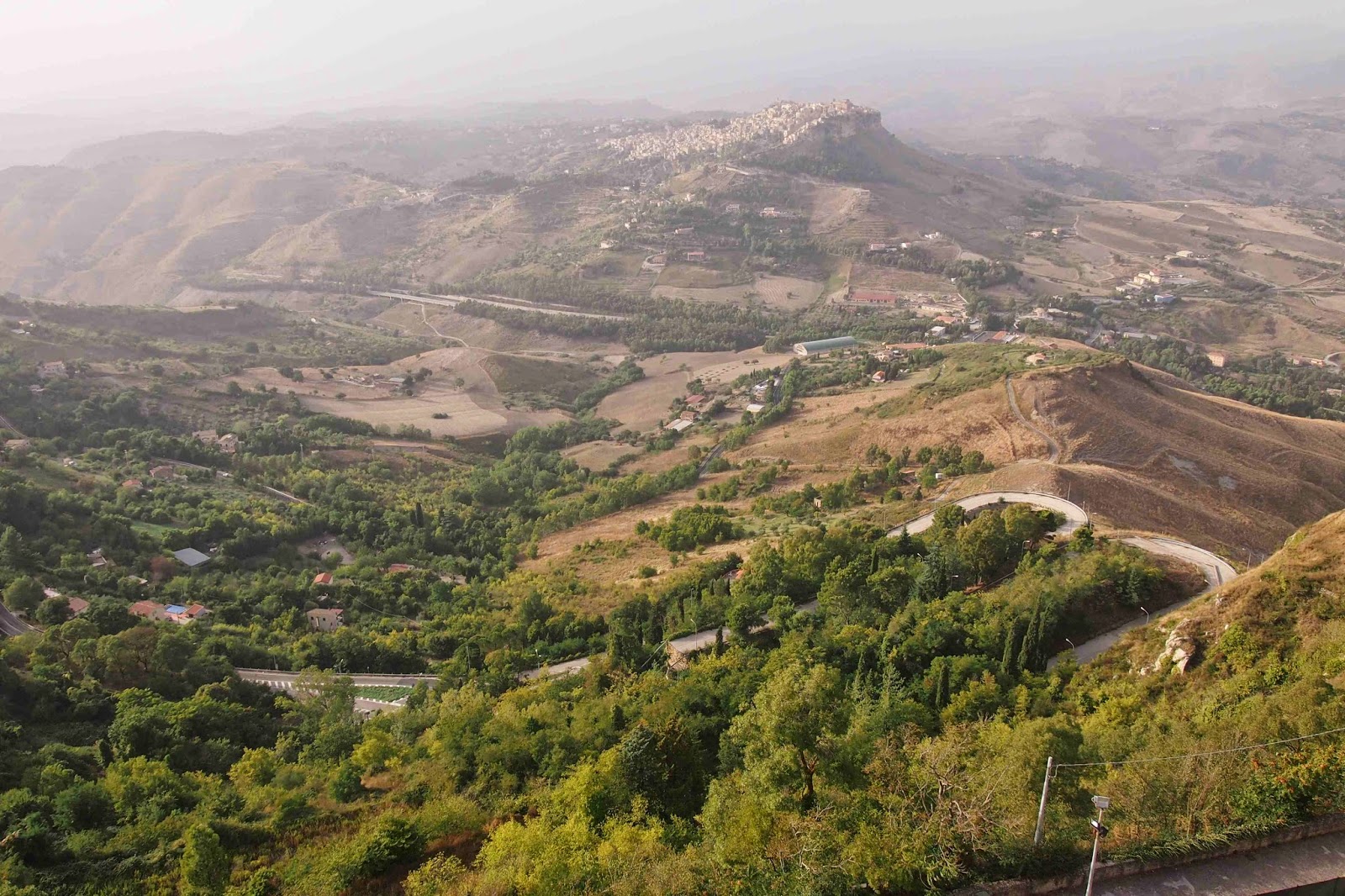 |
| Cactus are grown fro the fruit in the drier areas. |
 |
| These signs didn't match our experience! |
 |
| The hot room with the furnace behind |
There is quite a lot of structure left in some areas as well as the floors, and most of it has now been covered by extensive roofing to protect it. We arrived at the site of the Villa about mid-morning and it was well over 30C, but at least we would be inside. Once again, there was no map available at the ticket office, so we decided to buy a guide book. The audio guide would have cost as much, and we would have come away with information overload and nothing to refer back to, so the book was the better option, and it proved to be worth it.
The villa is built on a sloping site and the areas of building increase in importance as you move up the slope.
 |
| Some of the animal medallions around the courtyard |
 |
| Detail of an animal medallion |
 |
| Panorama photo of the corridor (it is actually straight) |
 |
| Detail from the corridor |
 |
| The basilica with the roof imitating what the original was probably like. |
Off to one side, but still part of the villa is another huge courtyard with three small rooms on each side, and this leads into the most enormous dining room or perhaps banqueting room would be a better title. This was the true reflection of the wealth of the owner, because dining your guests with fabulous meals was not a cheap undertaking. What you could afford to place on your table was an indication of your affluence. The usual was seven courses with two servants to serve each guest. No mean undertaking. Obviously to achieve this you also needed a large kitchen, but this was placed a distance away from the dining room, no doubt to keep the cooking smells and general din away from the guests.
 |
| This villa houses the famous Roman bikini girls mosaic |
Last, but not least, is the bath house. This was actually the first building we went in to, and this is where you realised that this place was special. This is where you see the first of the stunning mosaics that decorate virtually every room of the villa. The bath house was very important to the Roman citizen, and so the larger the bath house included in a villa complex, the more prestige afforded to the owner. It is speculated that up to thirty people could have used this bath house at any one time, so this meant that there would have been sixty slaves attending to the users. Mixed, nude bathing was the norm. One progressed through a bath house as follows: change room, exercise room, sauna, hot water bath, acclimatisation room, massage room, cold room, cold bath, then out. All the hot rooms were on the south side to take advantage of the warmth of the sun during the day. There was also a gymnasium attached to the bath house.
 |
| Portion of the banqueting hall floor |
Although the use of the villa declined, and was perhaps even abandoned during Roman times, it was used during the Byzantine era because a kiln of that era was discovered in one of the rooms. Although walls of it remained above the surface, the discovery of the mosaics and the villa's completeness only occurred in the twentieth century which was fortuitous. It appears that some of the mosaics have been removed, but many are intact. There were 21 different stones and 16 different types of vitreous paste and glass used to make the tesserae for the mosaic. It is estimated that it would take a worker six days to lay one square metre of mosaic. Although the villa replaced an earlier one, the present complex was built all at once, so there must have been an army of workers constructing it. Those currently responsible for the villa have done a fabulous job constructing the protective building over the site. For instance, they have actually constructed a ceiling and apse over the basilica completely in keeping with what would have been there when it was lived in. It was all most impressive. There were information boards for all rooms, in both Italian and English which we really appreciated. We came away from the villa absolutely gob-smacked. Words are inadequate, but we know that any other villa or mosaic we see will pale into insignificance. In fact, if you ever see any pictures of Roman mosaics, it is likely that they will be of those found at this site.
 |
| View from the castle at Enna Many towns are perched on the top of hills in Sicily |
In Enna we found the first war memorial we have seen in Sicily, and it was more a peace memorial than a commemorative one. It is interesting, because the population must have suffered under the Germans, and then when the Allies invaded. Perhaps those most affected emigrated to places like Australia to get away from the memories.
No comments:
Post a Comment